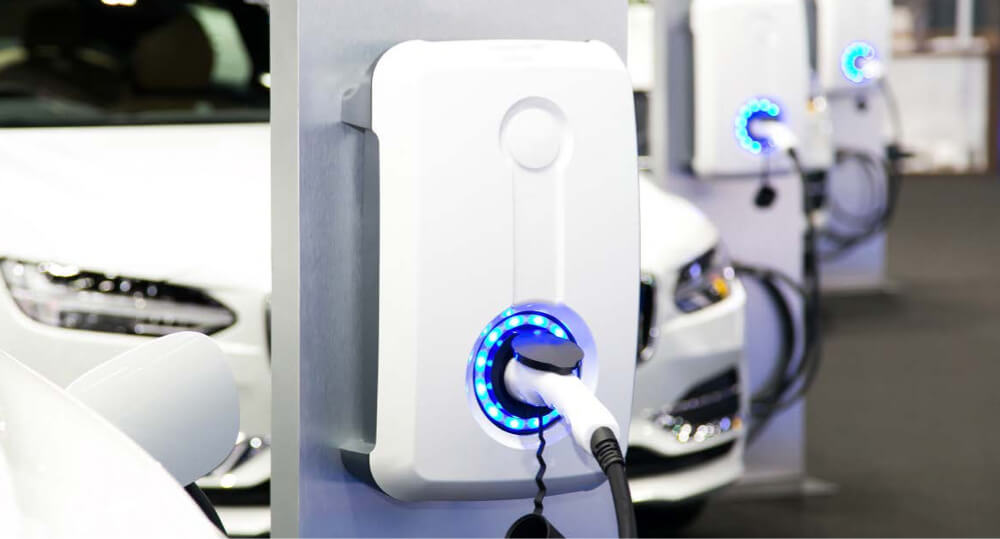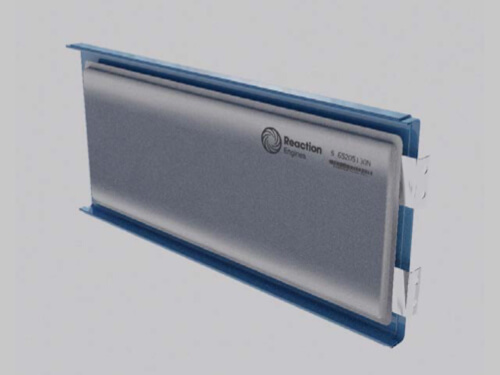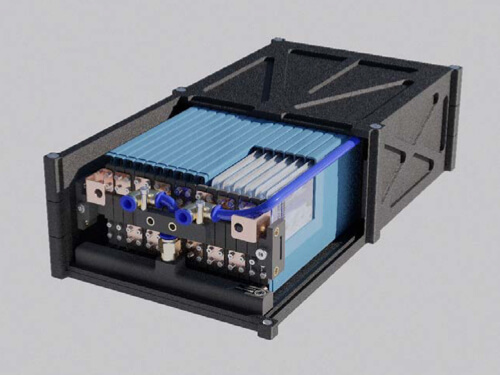Introduction
Why thermal management could transform the EV market.
With thanks to the following contributors:
Josh Denne – Head of SME Programmes, Advanced Propulsion Centre, UK
Professor Greg Offer – Professor in Electrochemical Engineering, Imperial College London
Simon Dunnett – Electrification and Energy Efficiency Solution Manager, Horiba Mira
Dr Yura Sevcenco – Technology Development Manager, Reaction Engines
Most automotive manufacturers have pivoted to electric vehicles (EVs), with Audi expecting to be completely electric by the 2030s. According to BloombergNEF, half of global passenger-vehicle sales in 2035 will be electric.
It’s unsurprising, therefore, that the global EV batteries market is expected to grow from $19.78 billion in 2020 to $22.99 billion in 20211. For battery manufacturers, the opportunity is clear but getting ahead of the competition depends on seeking out technological innovations that deliver a step change in EV performance, that translates into genuine customer benefit.
“‘Range anxiety’, long charging times, and long-term battery performance are among the main barriers to uptake [of EVs].” According to 2020 research for the UK Department of Transport2,
One of the biggest opportunities across all these parameters is thermal management. Better thermal management of batteries would offer longer times between charges, faster charges, longer vehicle lifetime and more efficient driving – addressing key concerns of consumers
It is also vital for futureproofing. Existing heat management will not be enough for the power and energy dense batteries of the future, which are being designed to enable longer journeys and faster charge times.
![]()
Our recent roadmap highlighted cross-industry consensus that thermal management was an area that needs a major improvement.
Josh Denne, Head of SME Programmes at the UK’s Advanced Propulsion Centre.
![]()

Professor Greg Offer of Imperial College London adds “by designing cells to remove thermal bottlenecks and allowing the heat to be properly moved out of the battery, the system can operate more efficiently.” His own work suggests addressing heat spots could achieve a 10-15% range increase, 200% longer lifetime through reduced degradation, and 15-20% cost reductions.
![]()
Total cost of ownership could be reduced by 60-70%. This would be a truly disruptive advance. If widely adopted it should significantly accelerate electrification in EVs. We really are hoping innovation in thermal management will trigger a revolution in the battery industry.Professor Greg Offer, Professor in Electrochemical Engineering, Imperial College London.
![]()
Introduction
WHY HEAT IS A PROBLEM
THE CURRENT LIMITS
THE BENEFITS OF ISOTHERMAL
THE SOLUTION
THE BOTTOM LINE
Too hot to handle: why heat is such a problem for batteries.
The battery packs that power most EVs currently are made up of Li ion cells; some use thousands of small cells, some use hundreds of larger ones. These come in one of three formats: cylindrical, prismatic or pouch cells. Each has benefits and drawbacks but all create complex patterns of heat transfer, and all suffer due to too much heat in the wrong places.
EV battery packs have the best thermal stability and lifetime if, when the vehicle is being driven, they maintain a temperature between 15 to 35°C, but they should be charged at temperatures of around 50°C to minimise dendrite formation. They also work best when they are of a uniform temperature, with a maximum cell temperature difference across the cell of 5°C.
Li ion batteries generate large amounts of heat in use, especially during rapid charging and accelerating. This heat is very unevenly distributed meaning some cells, or parts of cells, degrade much quicker than others. A single cell’s immature deterioration can considerably reduce performance and efficiency of the whole battery pack.
![]()
Cells really dislike having one end hot and one end cold – it has a big negative impact on efficiency and degradation. When you have 500kg of cells, you need to get all that heat out quickly. And as cells become more powerful, they become more densely packed and create more heat, so thermal management is high on the priority list for battery and EV manufacturers.Simon Dunnett, HORIBA MIRA
![]()
Professor Greg Offer of Imperial College London adds “by designing cells to remove thermal bottlenecks and allowing the heat to be properly moved out of the battery, the system can operate more efficiently.” His own work suggests addressing heat spots could achieve a 10-15% range increase, 200% longer lifetime through reduced degradation, and 15-20% cost reductions.

Introduction
WHY HEAT IS A PROBLEM
THE CURRENT LIMITS
THE BENEFITS OF ISOTHERMAL
THE SOLUTION
THE BOTTOM LINE
The current limits of battery cooling technology.
For the above reasons, EV battery packs employ battery thermal management systems (BTMS). A BTMS must provide the necessary heat transfer for optimal charging and discharging in the confined space available in the battery pack, and be manufactured economically. This is no small ask.
There are two main types of BTMS: active and passive. Active systems depend on forced circulation of a coolant such as water or air. Passive systems use methods like heat pipes or hydrogels to remove heat from the pack. The complexity of these systems adds significantly to the cost of the battery pack – in the region of 10-20%.
Alongside cost, one of the biggest problems with current BTMS options is that they create thermal gradients. For example, a cold plate beneath the cells cools the bottom much faster than the top. Meanwhile, a liquid cooling loop will remove heat more effectively from cells at the start of the loop but by the end it cannot absorb any more heat.
Temperature gradients cause adverse voltage distributions and differential ageing between the cells. In other words, the cell does not age uniformly. An ageing gradient occurs inside the cell, reducing the efficiency and lifespan of the batteries. Strong thermal gradients can also lead to deformations in cylindrical cells.
These issues compromise power efficiency when driving and when charging which, in turn, means slower charging and faster degradation, and therefore ever shorter periods between charges.
If a cost-effective way to deliver isothermal heat management could be developed, i.e. maintaining a consistent and even temperature throughout the cells and the system, a big chance could be delivered to battery performance.
“New recyclable multi-function materials together with active cooling strategies to cope with high-power applications are needed. Keeping batteries at their optimal temperature will require new materials and methods to more efficiently heat batteries and effectively manage and dissipate heat.” According to the Electrical Energy Storage Roadmap 20203.
“We’ve been on the journey of optimisation with ICEs for a hundred years,” says Josh Denne. “We’re only just starting for EVs. Thermal management is where some of the big short term gains are to be had”.
Introduction
WHY HEAT IS A PROBLEM
THE CURRENT LIMITS
THE BENEFITS OF ISOTHERMAL
THE SOLUTION
THE BOTTOM LINE
The benefits of isothermal EV batteries.
Improved cooling and isothermal performance means batteries degrade more slowly. Due to uniform degradation of parts, battery packs don’t need to be replaced when only certain cells are degraded. This could easily add an an extra two years to the battery pack’s life time.
An even more significant benefit in making EVs attractive to the consumer is faster charging. Pushing a car to its limits of charging (e.g. using ultra-rapid chargers) creates heat. This creates the risk of thermal runaway if a single part crosses a temperature threshold, so BTMS’s limit performance to keep batteries at safe temperatures. This control system is based on poor knowledge of heat within the cell, so cautious safety limits are set based on the hottest point which limits efficiency.
Isothermal heat management would create even, easily measurable temperature across the cell. That would give BTMS control systems greater scope to allow faster charging without risk of overheating.
Introduction
WHY HEAT IS A PROBLEM
THE CURRENT LIMITS
THE BENEFITS OF ISOTHERMAL
THE SOLUTION
THE BOTTOM LINE
It really is rocket science – our revolution in battery cooling technology.
At Reaction Engines, our next-generation thermal management expertise has been developed and adapted from our ground-breaking space technology programme. Having developed heat exchange technology able to quench airflow temperatures of over 1000 ̊C to ambient in a fraction of a second, we are experts in the field of thermal management. We believe our technology and expertise to be at least a decade ahead of anyone else.
Introduction
WHY HEAT IS A PROBLEM
THE CURRENT LIMITS
THE BENEFITS OF ISOTHERMAL
THE SOLUTION
THE BOTTOM LINE
Taking this expertise, we looked at how heat can be better managed within EV batteries.
“The trick was to use the system itself to manage heat evenly,” explains Dr Yura Sevcenco, Technology Development Manager at Reaction Engines.
So, when one spot rises in temperature, we take that heat and dump it in a cooler place first. That is an efficient immediate solution, as the heat has less far to travel. Cooling heat pipes still take heat out of the whole system but, in the meantime, all the cells within it stay perfectly regulated. All the components stay cooler and at the same temperature, which ensures any degradation is slow and even.
“A perfect heat management system might use materials with complex structures to manage this in a highly sophisticated way, and this was our first thought. But we needed a solution that was affordable to the average EV battery manufacturer. So, we went back to the drawing board – same idea, but with the starting point of making it affordable. We relooked at the concept and considered how we could create something cost-effective that still did the job,” explains Dr Yura Sevcenco. After a few iterations with different materials and designs, we created a simple foil that could be attached to any battery cell. This creates a thermal ground plane which transfers heat evenly across the surface, then takes it out of the system, so you’re not left with hotspots.
The nature of the foil design means that the benefits are realised not just on a specific one-cell basis but across the whole system. They equalise thermal gradients across the whole battery pack so it all degrades at the same time, in the same way.
Plus, our solution is malleable and conformable, unlike rigid cooling systems which can suffer from the thermal resistance of air bubbles in the interface between cooling and the cells. This means our solution adheres to the cells, even pouch cells which expand and compress during use.
Finally, we can reduce weight. BTMS developed using our foils can be up to 35% lighter because they’re so lightweight, making vehicles more ‘fuel’ efficient.
Altogether, this adds up to a step change in battery performance. We expect that deploying these foils would deliver a 20-30% improvement in battery performance.
However, we are not large-scale manufacturers. We are therefore looking to partner with innovative battery companies or vehicle OEMs. We are looking for partners interested in licensing our design, or who we can work with to design new battery systems which build in isothermal heat management from the ground up.


The bottom line: the business benefits of better batteries.
Heat management innovations, effectively deployed, would allow battery manufacturers to realise a 1.5 step change in performance, charge speed, and battery lifetime. This could benefit all types of battery manufacturers, and the whole supply chain.
For the first movers, it could bring a chance to secure significant market share as vehicle OEMs clamour for the best batteries.
For the vehicle OEMs, it would mean they have better performing, longer lasting, cheaper EVs. This gives them a better customer proposition, which they can confidently back with longer warranties.
This would be good for the manufacturers, good for the customers, and good for a world where competition for battery materials is hotting up.
Battery and EV manufacturers need to actively pursue innovative approaches to thermal management with the goal of creating isothermal batteries, including engagement with researchers and innovators in this field.
“There is colossal room for improvement,” concludes the Advanced Propulsion Centre’s Josh Denne.
![]()
Battery cooling is a critical strategic requirement for EV companies and will only become more critical. Not just for cars but for buses, trucks and many other types of road vehicles. If we want better time frames for EV adoption, we need better thermal management, and neat, affordable solutions that meet the challenging package and weight constraints that vehicle designers aspire to achieve.Josh Denne, Head of SME Programmes, Advanced Propulsion Centre, UK
![]()

